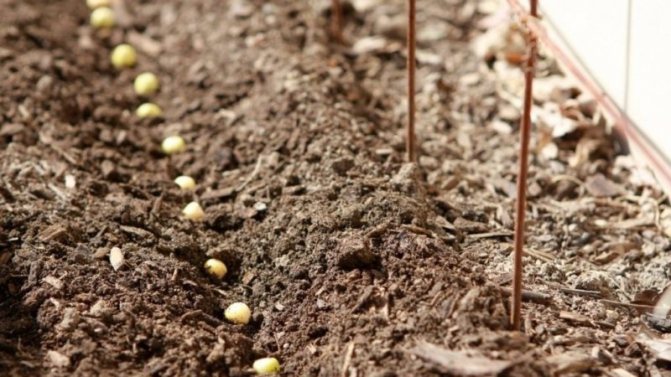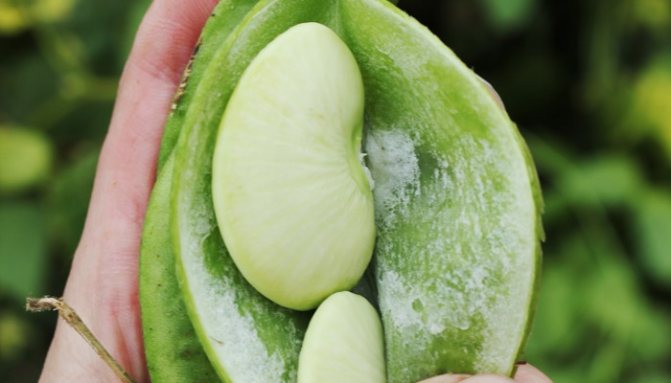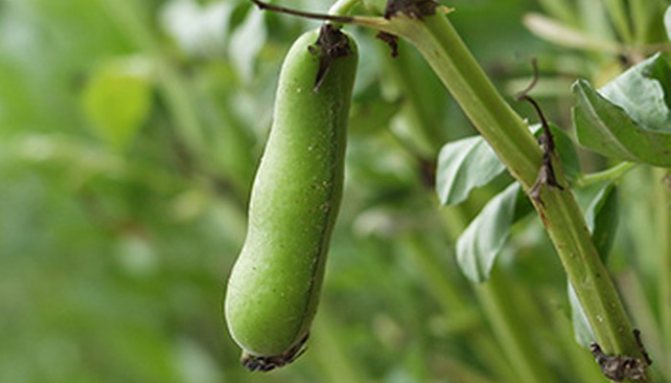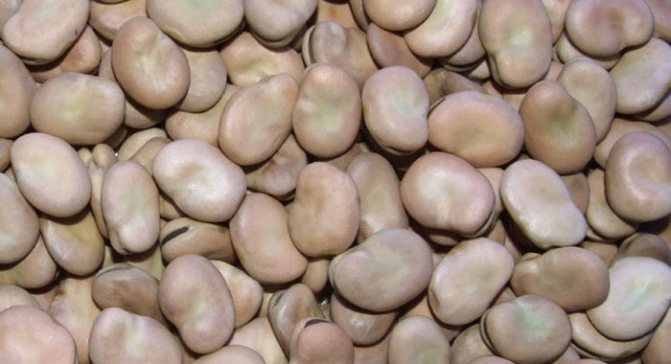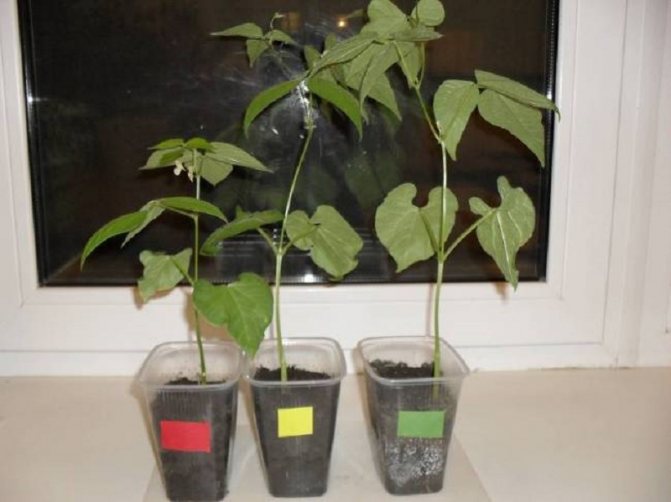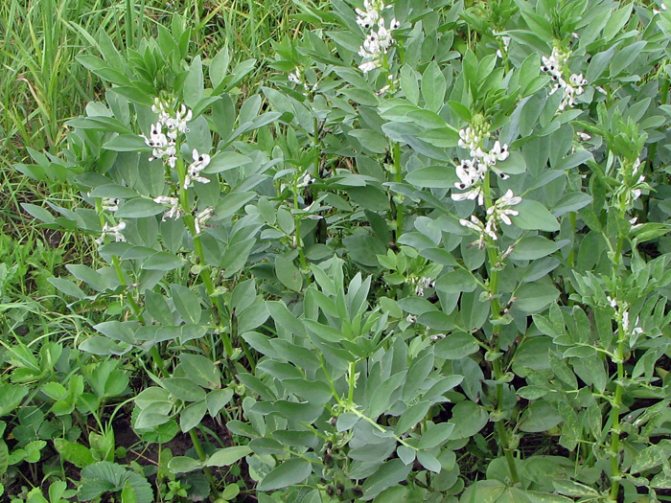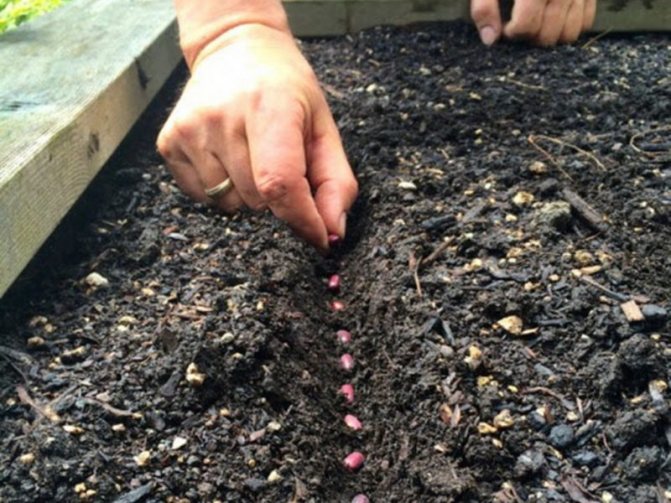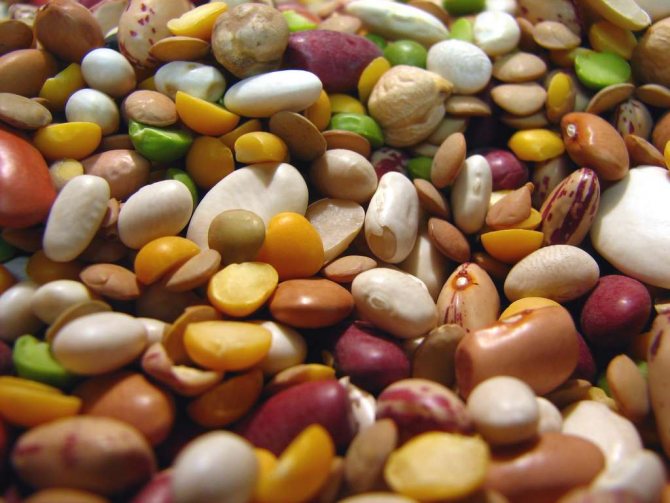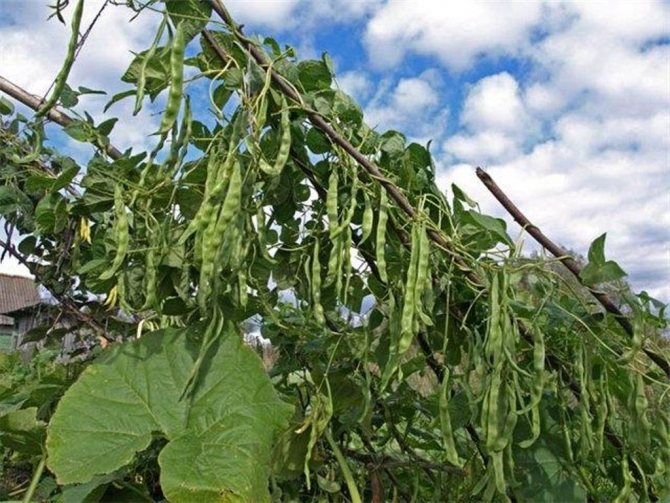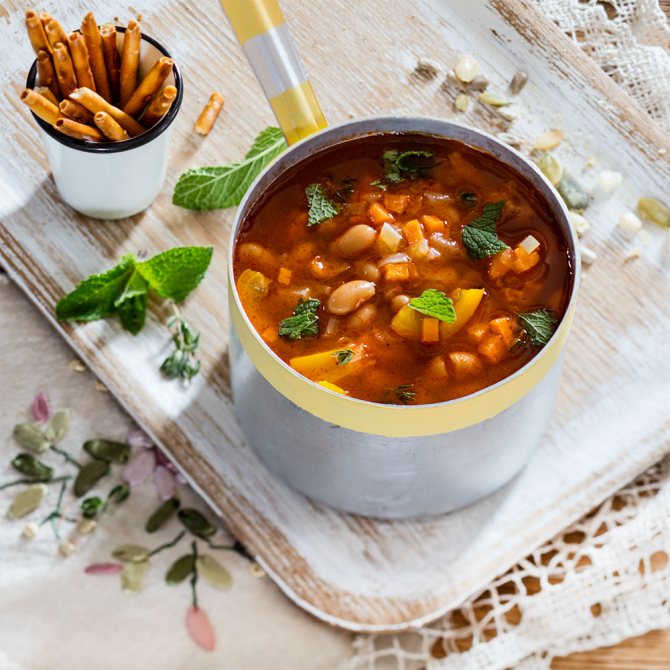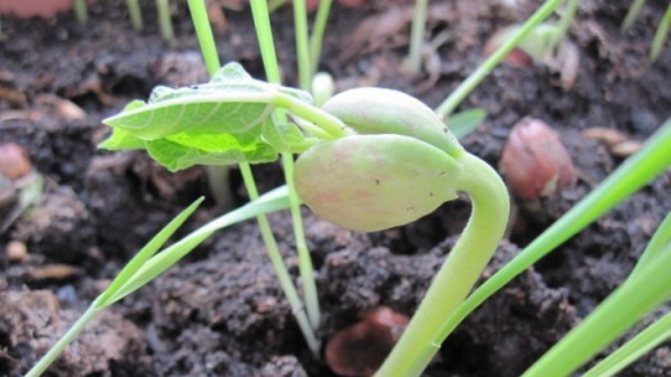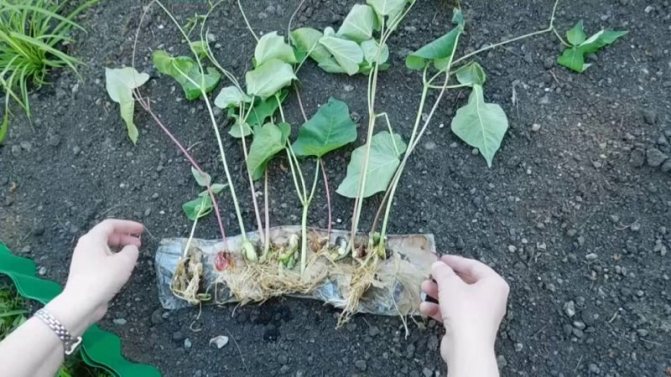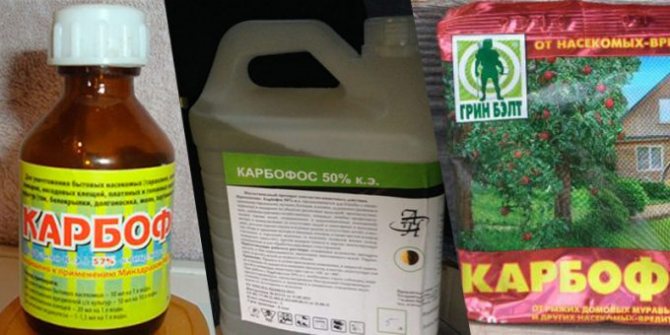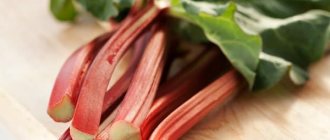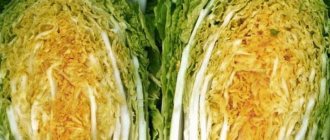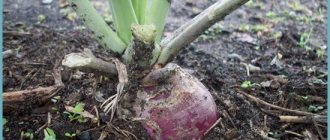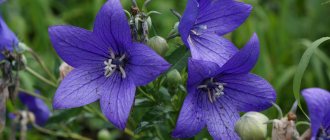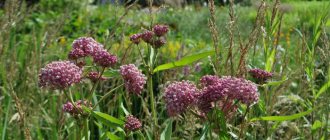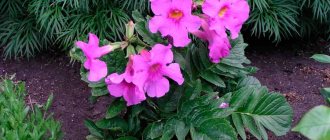How to grow beans in the country? The basics of caring for beans: pinching, watering, loosening and feeding! Buyanov Oleg
Ryabikova boulevard, 50 Irkutsk Russia 664043
+7

Date: July 14, 2020 ||
Heading: Country life and vegetable garden
||
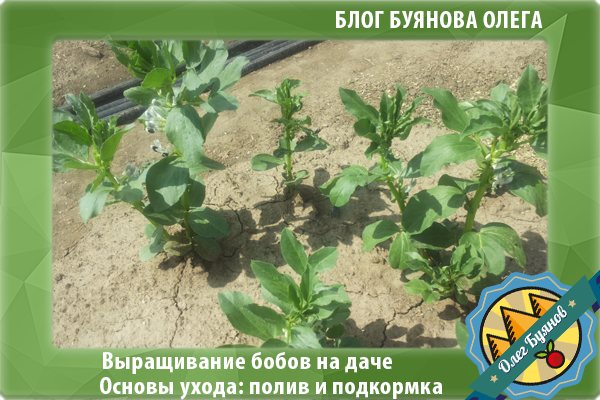

Hello my dear. Continuing the legumes theme. Today I will talk about favorable conditions for growing beans, watering regime, loosening and feeding. You will get acquainted with the basic rules of care and learn how pinching is useful to increase their yield.
To grow beans on your square meters, you do not need to have special knowledge, but still this process has its own nuances. This crop is of particular value as a green fertilizer and a natural source of proteins.
Thanks to the beans, the physical, biological, and chemical properties of soils are improved. The effect on the land of this green manure can be equated to the effect of manure.
When to plant beans?
To germinate the beans, 2-5 ° C heat is enough. Spring frosts are not terrible for them, since the planting material is able to withstand temperatures up to - 4 degrees.
Therefore, it will be possible to start sowing as soon as the soil starts to warm up. But for friendly seedlings, the soil must be warmed up to at least 5 degrees Celsius. In most regions, sowing of this culture is carried out from the end of April to the second decade of May.
The beans will feel as comfortable as possible at a temperature of 20-22 ° C. But at temperatures above 25 ° C, they will already suffer: the set flowers fall off and the fruits do not ripen.
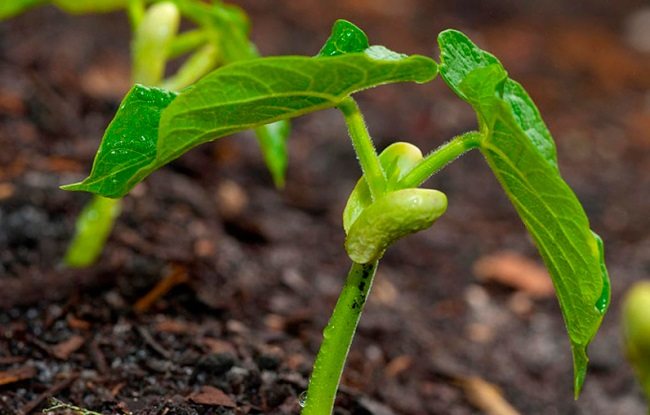

In regions with cold climates, it is practiced to grow beans through seedlings. In this case, sowing should be carried out in separate containers, which must be done 30 - 35 days before planting plants on the beds, but before planting in a permanent place, the seedlings are still hardened. As a rule, this method is used to obtain an early harvest.
Sowing
Before planting, the seeds are placed in water for about 5-6 hours or in a growth stimulator for 2-4 hours. To hatch, you can wet a piece of cloth and wrap them in it. If the seeds are very dry, they need more time to soak - it is better to leave them for 12-20 hours, changing the water periodically.
Sowing seeds can be done in two ways:
- On a flat area, leaving 40 cm of free space between the seeds;
- On the beds, reducing the distance between adjacent beans to 20 - 25 cm for dwarf varieties and up to 10 - 12 cm for tall ones;
The row spacing should be at least 45 cm. The planting itself, as a rule, is carried out in two rows, which is due to the fact that in this way the plants will bear more fruits, and it will be easier to care for them.


In cases where black Russian beans are used for planting, the row spacing is reduced to 30 cm, and the seeds are laid out with a small interval - about 3-5 cm. Sowing is carried out in moist soil. It will not be superfluous to water the beds after it ends.
The seeding depth depends on the quality of the soil. On light soils, the depth of the hole for the seed is 6-7 cm, on heavy soils - 3-5 cm. Having dug in the seeds, we mulch the surface of the bed. Seedlings will appear in about 14-20 days. After that, the main task will be to properly care for the plants.
Types and varieties of beans
There are a number of planting beans available in many countries.
Modern varieties of beans have a high nutritional value and excellent taste. Breeders like beans are divided into two main groups: northern and western European varieties. Northern varieties produce high yields in temperate regions, while Western European varieties are grown in southern regions with hot, arid climates.
- Russians are black. One of the most famous mid-early varieties, widely used for planting in the northern strip of Russia. The bush reaches a height of 60 cm, blooms with white flowers and black spots. The shape of the beans is slightly curved, the length of the pod is 7-8 cm. The dark purple seeds have an oblong oval shape, when the beans are ripe they do not open.
- Belarusian. They belong to a mid-season variety, the height of the shoots is from 60 cm to 1 meter. The flowers are white, spotted. The pod is straight, up to 11 cm long; when ripe, the valves of the fruit crack. The seeds are light brown in color, elongated. The variety is widely known in Ukraine and Belarus, Latvia.
- Windsor greens and whites. Mid-season varieties. The plant is compact, the height of the stem is 0.6-1 m. The shape of the beans is elliptical, slightly flattened, with fleshy, green valves that open when ripe, contains 3 seeds. Varieties differ in seed color.
- Virovskys. The beans are medium early. A plant up to 1 meter high with an erect stem. The flowers are large. The bean pod has a curved shape; 3-4 large, milky seeds ripen in it.
The term "bean" refers to the fruit of any leguminous crop. However, gardeners call it an ordinary or Russian bean - a species of the genus Vika.
This plant has a high nutritional value. It is due to the presence of proteins in fruits, which include essential amino acids. The product also contains vitamins of groups PP, C, B, iron, calcium, sulfur, potassium and phosphorus. The high calorie content of beans allows you to quickly gorge on dishes made from them, to keep you feeling full for a long time.
Of particular importance is the planting of leguminous crops as green manure for the restoration of depleted soils. The roots of these plants are home to bacteria that are capable of assimilating atmospheric nitrogen and converting it into an ammonia form, which is available for other crops. In addition, legumes loosen the dense soil, prevent the growth of weeds and the washing out of the upper fertile layer by rainwater. This is due to the ability of plants to form dense clumps with their roots.
The main varieties of common bean growing in the territory of the Russian Federation include:
- Aushra. Pest resistant variety. The period from sowing to technical maturity is 3.5–4 months.
- Belorussian. The fruits ripen in 2–2.5 months. The variety is characterized by good yield indicators.
- Windsor. Large fruits of white or green color. The variety belongs to the early maturing, it is characterized by increased productivity. Seedlings tolerate frost well, beans can be grown in northern regions.
- Velen. Plants are unpretentious to the soil. The beans are curved and medium in size.
- Virovsky. Stable variety, fruit with high palatability.
- Black giant. Tall plants with long (up to 15 cm) pods.
- Black Russian. An unpretentious variety, the fruits can be eaten without peeling.
Legumes popular today are valued for their exceptional taste, along with nutritional value and benefits for the human body.
There is a conditional modern gradation of legumes into main groups:
- Northern varieties. Such species give high yields in regions with moderate and colder climates.
- Western European. Occupy fields in hot, southern regions, where dry conditions are frequent companions in growing crops.
Depending on the region, the degree of ripening and other parameters, you can choose the variety that is most suitable for growing in a particular area. At the moment, some preferences have formed among the consumers of legumes. Which, of course, affects the development of agriculture in this direction.
Belarusian
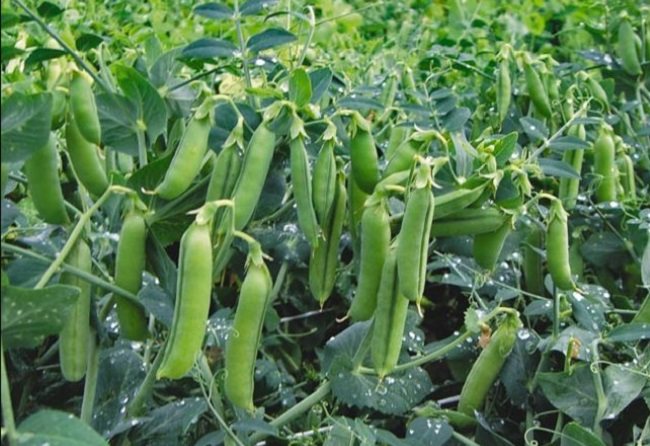

The name comes from the country of origin of the culture. The variety appeared in 1950. Mid-season peeling species. From the moment of sowing to the appearance of fruits, it takes about 100 days. Flowering occurs 25 days after germination. The stem reaches a height of 50 to 100 cm. The length of the pod is about 10 cm. The seeds are elongated and have a pale brown color. Perfect for canning.
Windsor
There are white and green subspecies. Bred more than two centuries ago by breeders from England. Medium ripeness. From sowing to fruit ripening, it takes about 120 days. The white variety ripens 10 days longer. The stem part of these crops often exceeds a meter in height. The pods are small. Their shape is slightly curved and swollen. Inside there are usually 2 large flat green fruits. It is rare to find 3 or 4 pieces.
Russian black
The name was given to legumes in 1943 for the color of the seeds - dark purple. Fruits are oval, slightly oblong, wrinkled, of medium early ripeness. Ripen 90 days after sowing. The pod is about 8 cm long, slightly curved. Due to the absence of the pigment layer, it can be eaten whole.
Virovskie
Medium early grade. The stem is erect, reaching a height of 1 meter. There can be 3-4 fruits in a pod. Large matte, milky or lemon yellow in color. The bob itself is slightly curved. Its length is 9 cm. Seeds ripen 100 days after sowing. The stem part of the culture can be 80-90 cm high. Resistant to many diseases.
On the territory of Russia, several garden varieties of beans have been acclimatized and gained wide popularity.
Velena
Unpretentious in care, soil quality. Seeds are rounded-angular, light fawn in color. Fruits are medium, curved, green in color with sparse pubescence.
Belorussian
The fruits are large, straight, up to 10 cm long. The grains are light brown, oval in shape.
Virovsky
Cold-resistant grade. The plant has 24 - 26 beans with excellent taste.
Resistant to cracking, drought, not affected by pests.
Black Russian
Has a short ripening period, bears fruit stably. The fruits are eaten green and ripe.
Black giant
Tall variety, with large fruits up to 14 cm.
Windsor
An early ripe variety, with increased productivity, frost-resistant. The fruits are large, with white or green seeds.
The most suitable soil for growing beans from seeds is loamy, with good sunlight. The acidity index of the soil should not exceed 7.0. The introduction of wood ash and organic fertilizers increases yields, accelerates the growth of legumes. It is better to place landings on elevated terrain.
Plants, independently providing the soil with nitrogen, do not tolerate its excess, they do not tolerate a lack of potassium. Therefore, planting after legumes is not recommended.
Care
Watering... The beans can withstand long enough without watering, but at the beginning of the growth, a lot of water is needed. In cases where there has been no rain for a long time, then the planting must be watered. As a rule, it is watered 2 times a week, at the rate of at least 10 liters of water per 1 sq. meter.
Loosening... The land around the plants must be periodically loosened and weeds removed. Row spacings are processed several times to a depth of 8-12 cm; the first loosening is carried out after the appearance of the second leaf, then they are repeated as the soil crust is formed and stopped at a plant height of 50-60 cm.
During the second and third loosening, the plants are spud, which helps to strengthen the root system, increase the resistance of plants to winds.
Top dressing... If the plants grow slowly, they are fed with potash and nitrogen fertilizers - 10-15 g per square meter. m.
Garter... Only tall varieties need a garter (to facilitate the process of caring for them).
To do this, we install a trellis on them, which can be done as follows:
- After planting in the soil at the edges of the rows, we drive in stakes - supports (height 1-1.2 m);
- When the seedlings grow a little, we pull the wire on the stakes with an interval of 30 cm;
Beans: Outdoor planting. Care and how they grow
Beans belong to the legume group. They have been known on the territory of Russia for a long time, but recently they have begun to be undeservedly forgotten. They are an unpretentious plant that can be eaten.
According to their characteristics, beans are classified as useful products, since they contain a large amount of protein, microorganisms and vitamins.
They have a good taste, and well-prepared dishes from them can quickly saturate the body.
Collection and storage
They start to remove the beans when the seeds in them are almost completely developed, but they have not yet lost their tenderness and "black grooves" have not formed at the place of attachment to the fruit. First of all, we remove those fruits that are located at the bottom of the stem. We break them out, free the seeds from the valves.
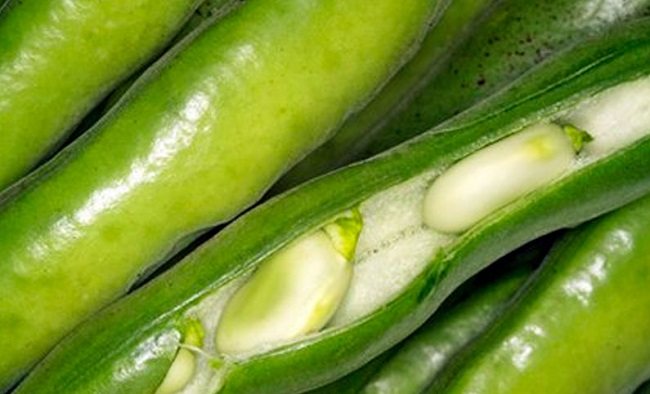

In cases where the fruits will be used for food as a whole (grains with valves), we remove them when the valves are still juicy, and the grain size reaches about 1 cm.In cases where the grown grains will be eaten raw, the beans should be harvested when the seeds in milk ripeness, they reach the full size for the given variety.
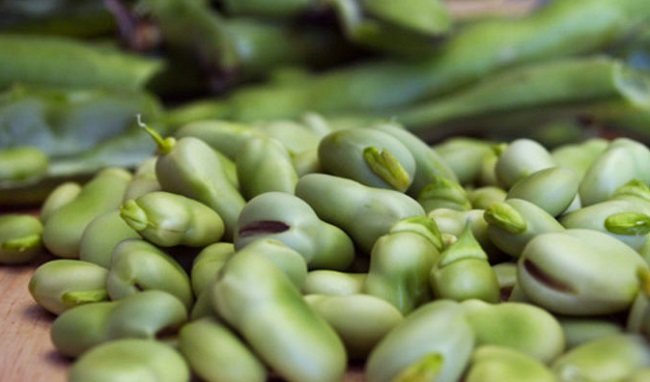

We harvest the crop in 3-4 doses with an interval of 8-10 days. We remove along with the tops; tied in sheaves, they ripen well in a barn or in an attic. We hang the sheaves with the roots up. Threshing is carried out manually, hulling seeds from the valves.
One plant can collect 30-50 g of seeds.
Secrets of Successful Outdoor Bean Growing
To grow beans more successful, regular soil loosening is carried out. In the spring, while the seedlings are still small, it is recommended to spud them with a hoe. The culture does not like the neighborhood of weeds, so the beds must be kept clean.
When the plants are covered with flowers, the upper part of their stems is pinched, shortening by 10-15 cm. The tender and juicy shoots lure the black bean aphid, for which they are a favorite delicacy. Getting rid of this pest will not be easy. Pinching also affects the ripening of the fruit, making it more even.
The first crop of beans outdoors can be harvested in early summer. It is important not to be late with the dates, otherwise the fruits will overripe, becoming slightly edible - fibrous and tough. You can eat beans of milk ripeness, which have reached a length of 10-15 cm. In fully finished fruits, seeds are visible through the valves. First of all, the lower beans are removed from the bush, and the rest are harvested as they ripen. If the leaves are already blackened, it is better to leave the fruit on the plant so that later you can get seeds from it for planting.
Black Russian beans have a long history of cultivation. They were an important part of the diet of our ancestors, who appreciated this vegetable crop for its simplicity of agricultural technology and health benefits. When eating bean dishes, the feeling of satiety remains for a long time, they saturate the body with the vitamins, minerals and trace elements it needs. They are also used in folk medicine, providing anti-inflammatory, astringent and diuretic effects.
Plants are not afraid of heat and cold, and the presence of a powerful root system and a massive stem does not allow them to break under the weight of the crop or strong wind. Beans are the perfect fertilizer.Throughout their life cycle, they will enrich the soil with nitrogen. And when it is completed, the bushes can be pulled out of the ground and buried during the autumn work on the site. The stem and leaves of the beans will quickly decompose, saturating the soil with nutrients.
There are crops that are grown in the garden not only for the sake of the harvest. These include beans.
While on your site, they loosen the soil, enrich it with nitrogen, and, of course, provide you with fruits with a whole range of nutrients and good nutritional value. In addition, the branched root system of the plant interferes with the formation and development of various weeds.
In order to know how to grow beans in the country, you need to familiarize yourself with the basic requirements for growing and caring for this crop in the open field.
Growing according to all the rules
For planting beans, the most illuminated area is chosen. Soil moisture is also very important, therefore lowlands or aisles of other beds are often allocated for legumes, which facilitates maintenance. The structure of the soil is not fundamental, beans can grow even on heavy loams, the main thing is that the soil is rich in organic matter. Therefore, the agricultural technology of beans, first of all, involves the application of fertilizers. In autumn, compost, manure, mullein or humus are introduced for digging. Poultry droppings are not recommended for beans due to their high nitrogen content. But they need phosphorus fertilizers, so in the fall they enrich the soil with superphosphate.
You can prepare seeds for planting at home. Before sowing, bean seeds should be soaked in hot water (about 50 ⁰C) for a couple of minutes for disinfection. Then it is recommended to treat them with a drug that increases the yield of legumes, for example, Nitrogin. For successful germination and further cultivation, the seeds need good moisture, therefore, if your soil is sandy in the country and dries out quickly in spring, it is better to wet the beans before sowing overnight so that they are saturated with moisture, and their dense shell has become softer.
Sowing beans is carried out as early as possible. And do not be afraid that nighttime cold snaps can damage the seedlings, they perfectly withstand even frosts down to -4⁰С. The main advantage of early sowing is the moist soil, which promotes quick emergence. In addition, further care will not require frequent watering.
Description of the plant
Beans are an annual vegetable crop with a developed root, up to 100 - 150 cm long. The stem is erect, tetrahedral, weakly branching.
Plants are divided into two categories: undersized and tall, with a height of 30 to 140 cm. Early varieties have a short ripening period. Compound leaves consist of 3 - 5 leaflets, with a stipule ending in a tip.
Inflorescences of 5 - 6 white flowers. Sometimes - with a black spot on the wings. There are varieties with different shades: yellow, brown, blue and variegated.
The beans have long, sometimes curved fruits, depending on the variety, from 4 to 20 cm long, as well as two thick valves, which are green at the stage of technical maturity, but become dark, with a dense skin at the biological stage of maturation. In some varieties, the walls have a pronounced parchment layer. When fully ripe, they do not crack or spill out. In other varieties, such a layer is insignificant or absent.
Seeds for growing legumes are selected according to their technical characteristics. They differ in shape, size and color. Color palette - from white to black. There are green, brown, black, mixed colors of fruits. Beans are divided into two types: fodder (small-seeded) and vegetable, large-fruited.
Moisture-loving plants require regular and abundant watering, they do not tolerate even a short drought. They need to be watered at least 2 times a week. For the fruits to swell and germinate, moisture is needed from 100 to 120% of their mass.
The beans have a long shelf life.In favorable conditions, they do not lose their taste for many years. Seed germination for growing beans lasts up to 10 - 11 years.
Plants are self-pollinating. In rare cases, cross-pollination is possible. The growing season is 80 to 140 days.
There are many varieties of this plant, which is a storehouse of fiber and plant proteins for humans. Legumes have been known for a long time. They were grown by our ancestors in large quantities, as they were the main source of food. Being very nutritious and useful, they deservedly occupied most of the area in the gardens of people in the countryside.
In addition to the large number of beneficial trace elements, the legume plant provides another benefit. After the autumn digging of the soil, together with its stem and root parts, the earth is perfectly fertilized.
Leaves are unpaired or paired, depending on the variety. As the beans grow, they develop a powerful rhizome. During flowering, whole inflorescences are formed. The fruits appear as pods. They can be of various lengths and widths. It depends on the variety and the adequacy of the nutrient supply during growth.
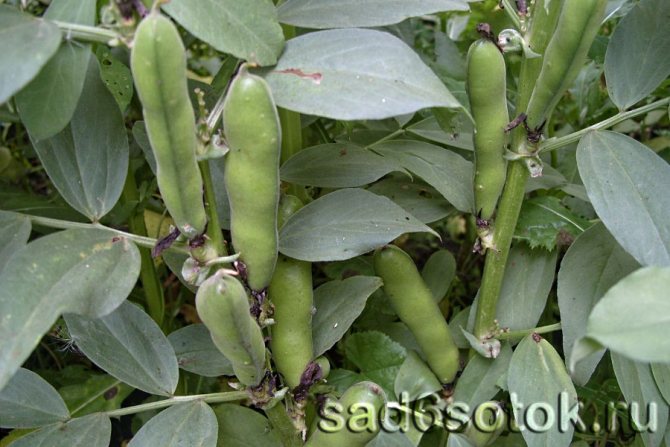

Beans are a herbaceous annual plant in the Legume family. The stem of the plant is erect, thickened, reaching a height of 30 to 120 cm. The leaves are unpaired and paired, the color is green. It has a developed powerful root extending into the soil up to 1.5 meters. The bean inflorescence is a raceme with 4-12 flowers 2.5-3.5 cm in size.
How to store beans for the winter?
When the entire crop is harvested, the remaining stem is cut off. The earth with the rhizome is dug up before wintering. The root and stem of the beans is a good compost for the soil, which will enrich it with nitrogen. Beans are stored in a variety of ways.
Drying
Thus, you can prepare ripe pods, fruits. Do not dry them in direct sunlight. The crop should be spread out in the shade, in a well-ventilated area or outdoors, but brought into the house at night.
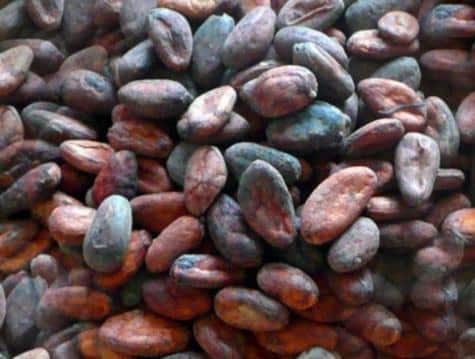

Freezing
Only green pods or fruits are frozen. They are washed, blanched, hermetically packed and sent to freezers. They can be stored there for 8-12 months.
Conservation
Green legumes and pods are also used. After blanching, they are placed in a sterile container. Then it is poured with hot brine, prepared to taste, and pasteurized for about 1.5 hours at + 80 ° C. Canned not separately, but in the form of a variety of salads, combining with any vegetables and herbs. There are many similar recipes that can be found in cookbooks or on the internet.
If you have a plot of land that is suitable for growing vegetables. Sowing the beans is worth trying. You will benefit twice. Harvest this highly beneficial crop and at the same time enrich the soil on the site thanks to the ability of legumes to fertilize the soil.
What are beans
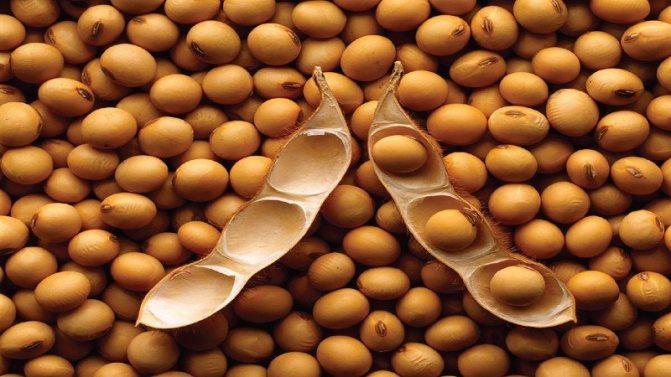

There are several classifications of plants according to various characteristics, so it is difficult to say unequivocally whether legumes are vegetables or not.
"Vegetables" and "fruits" - definitions not from scientific botany, but from everyday life. So, in the scientific sense, acacia, beans and sweet peas are close relatives, at the everyday level these are plants of a different order. For an ordinary person, the first is a tree, the second is a vegetable, and the third is a flower.
According to the agricultural classification, legumes are classified as vegetables or legumes.
By the way! The same plant from the point of view of botany can belong to different categories in agriculture. For example, beans and peas, which are harvested in a ripe state, are legumes, while asparagus beans and peas harvested in wax ripeness for conservation are vegetables.
In cooking, these crops are referred to as vegetables.
Landing scheme
Based on how to properly plant, cultivate beans and which scheme to choose, the level of germination and yield depends. You can plant beans according to 2 main methods:
- Single-row wide-row method, in which there are intervals in the row spacing of at least 40-45 cm. Thanks to this, adult plants do not interfere with each other. The method refers to the relatively fast ripening sprouts.
- Two-line tape method, in which between the ribbons 45 cm, between the lines - 20 cm. In the row between each seed there should be at least 10 cm. Seeds should be sealed about 8 cm into the ground. In general, the seeding rate in this case is 25-30 g per 1 m².
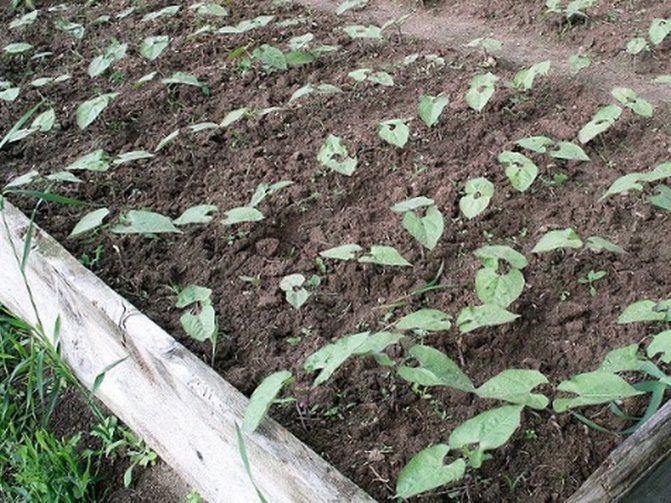

Tape method
The plant grows well separately in the garden or together with other crops, for example, potatoes. To prevent the seedlings from freezing, they can be covered in spring with a portable plastic wrap.
If you want to get an earlier harvest, legumes can be planted with seedlings. It is worth planting seeds at home in peat pots 25-30 days before planting. You can plant seedlings in open ground in mid-May.
How to plant legumes on the site? Standard instructions for growing legumes outdoors are as follows:
- Prepare planting material.
- Sow peas according to the scheme in pre-fed, fluffy soil.
- Cover with earth, compact, water.
- Cover the garden bed from the last frost, birds (you can use, for example, agril, film).
The benefits of beans for the garden
The need to grow beans on the site is due to the fact that they:
- enrich the soil with nitrogen (there is no need to use artificial fertilizers);
- reliably protect vegetable crops by releasing phytoncides that suppress the growth of pathogenic bacteria, infections, fungal diseases;
- improve the structure and quality of the soil;
- scare off moles, malicious pests of vegetables and berry crops;
- restore soil after vegetation when used together with mustard, rye, lupine.
Beans - a versatile healthy product that is used to prepare a variety of dishes. They also enrich the soil. Growing beans does not require special skills and technologies. Be sure to plant them on your property and they will become indispensable crops in your vegetable arsenal!
Watch the video! Bean harvest

